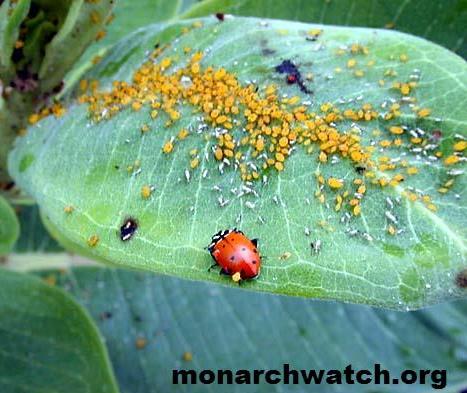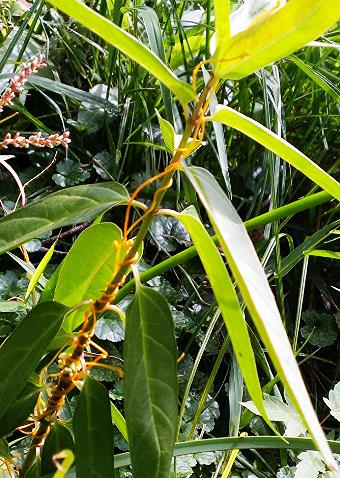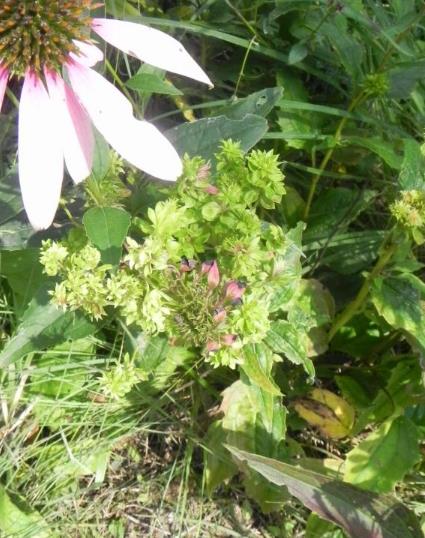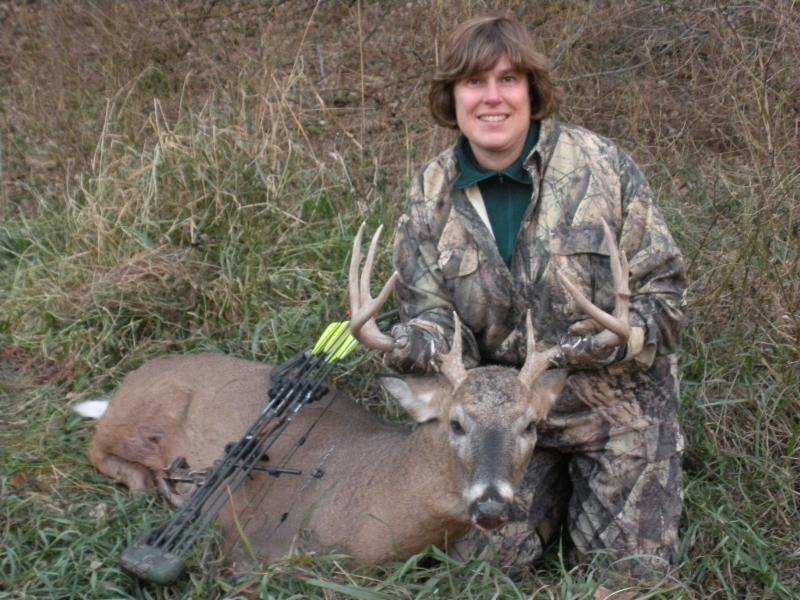|
Native Plant of the Month
|
New England Aster
Aster novae-angliae
Moisture: Wet or Moist
Exposure: Full or Partial Sun
Bloom: August- October
Color: Purple
Height: 3-5
Description:Showy robust perennial with clustered stems growing from short, thick rhizomes. Stems and leaves hairy and glandular. Lance-shaped leaves clasping stems. Attractive flowers 1"-2" wide with a long blooming period. Grows in wet or mesic prairies and wet meadows. Plant provides nectar and pollen for bees and butterflies. (syn. Symphyotrichum novae-angliae)
|
|
Invasive Plant of the Month
|
Yellow Foxtail Grass
Setaria pumila
Exposure: Full Sun
Moisture: Moist/Dry
Height: 6 inches- 3 ft
Blooms: June- September
Description: This grass if an aggressive Eurasian weed that grows in disturbed areas. It is an annual that spreads by seed and forms clumps. The head of the grass is a 2-5 inch spike that resembles a fox's tail. In the head turns yellow when mature and ready to release seed. The leaf blade is smooth and about a foot long. The stem is reddish at the base. Also known as pigeon grass, cattail grass, or yellow bristle grass. Management techniques include pulling or weed whipping the seed head off before it matures.
|
| Pollinator of the Month |
Great Spangled Fritillary
Speyeria cybele

Range: Most of the United States and Lower Canada
Habitat: Prairies and open woods
Adult Identification: Tan to Orange wing coloring with black spots on tops of wings and white spots on underside of bottom wings. Females slightly darker then males.
Caterpillar Identification: Black with reddish orange spines
Pollination: The Great Spangled Fritillary helps pollinate various large native plants such as Boneset, Milkweed Species, Joe Pye Weed, Ironweed, Bergamot, Virginia Mountain Mint, Coneflower species, and more.
|
| Garden Club Tours! |
Natural Shore Technologies is now hosting FREE field trips for Garden Clubs with 10 or more members. Come join our Native Plant Specialist Shirley Mah Kooyman for a 1 hour lecture and tour of our retail nursery in Maple Plain! Your club will get an up close experience learning more about Minnesota Natives!
Choose from one of the following lectures:
- Minnesota's Native Plants: A Sampling for Your Garden
- Landscaping with Native Plants
- Top 30 Native Plants for your Garden
|
|
|
Retail Nursery Hours
|
COME TO OUR OCTOBER 50% OFF SALE!
Friday October 11th 12pm-6pm
Saturday October 12th 9am-1pm
ALL REMAINING RETAIL NURSERY STOCK 50% OFF!! 5300 Hwy 12, Maple Plain
|
 |
|
Common Restoration Pests: What are they and how do I get rid of them?
|
There are many different kinds of diseases, insects, funguses, parasites, and other pests that a plant can be exposed to every year. Luckily, many native plants have natural defenses or adaptations to help them cope. However, there are still some garden pests you might notice on your plants throughout the growing season. What are these pests and what are a few simple home remedies you can employ to take them out while at the same time protecting your native plants?
Aphids: Are tiny little bugs that come in a variety of colors depending on their species and can be brown, green, yellow, red, and black. While aphids rarely kill a plant, they do suck sap from leaves which cause the leaves to wilt or grow misshapen.
Aphids also secrete a substance on the plant that can lead to fungal infections on the plant
 |
| Aphids and their natural predator the Lady Bug on Common Milkweed |
There are a variety of methods you can use to control aphids, one being spraying the infested plant with a garden hose. Control weeds like mustard or sow thistle that often host populations of aphids. Promote natural predators such as lady bugs, parasitic wasps, and damsel flies to help control aphid populations. Insecticidal soaps or homemade garlic remedies can be sprayed onto the plant to control populations as well. Its important to remember to monitor plants often in the summer and treat them early because aphids reproduce quickly.
Powdery Mildew: A fungal disease often seen in the spring or winter where cool nights follow warm days. This appears on the plant as a white or grey residue. The good news is it might look bad, but rarely will it kill the plant its infected. It might however, cause
the plant's leaves to wilt and fall off or effect the seeds of a plant.
 |
|
Powdery Mildew on Bergamot
|
Infected plants can be removed to help prevent spread
of the fungus. Thinning and pruning plants to improve air circulation and planting them in the sun helps prevent fungal spore germination. There are also many home remedies that can be employed to help cre
ate an inhospitable environment for the fungus. One includes spraying the leaves with one teaspoon of baking soda in one quart of water to increase the pH on the leaves. Fungicide sprays can be used as well that are specific to powdery mildew but should be used sparingly.
 |
|
Dodder on swamp Milkweed
|
Dodder: Is an annual parasitic plant that looks like a long orange or yellow string. The long tendrils reach from host plant to host plant, sucking away nutrients.It has many small, white or pink flowers that can produce thousands of seeds that can stay viable for many years before germinating. Dodder itself isn't much of a threat to the life of a plant, it might damage the plant but rarely is it fatal. However, it has been known to host diseases like Aster Yellows that can be more damaging to plants.
Remove all we
eds that are hosts to Dodder.
Hand pulling dodder is time consuming but the most common means of control as harsher chemical controls can also harm the h
ost plant. Dodder can germinate from tiny pieces of the original strand, so multiple removals are required until the parasitic plant is under control.
Aster Yellows:
This is a disease caused b
y a phytoplasma that is transmitted to the plant by infected insects or weeds. The disease is worse when summers are cool and wet because those conditions favor insect populations. Symptoms of Aster Yellows include yellowing of the leaves and stem and mutations of the flower and leaves.
 |
|
Leaf distortion characteristic of Aster Yellows on Pale Purple Coneflower
|
It is hard to control the outbreak of aster yellows due to the high levels of infected insects. Its best to pull out the infected plants as soon as symptoms appear to keep it from spreading to healthy plants. Weeds like dandelion, dodder, and plantain can be carriers of the disease and should be pulled out. Certain species of plants like coneflower, coreopsis, black eyed susan, and others are more susceptible to aster yellows. If this disease is prevalent in your garden, replanting
with species less prone to aster yellows would be a good option.
Caution:
Its important to remember to do some research before buying a plant that is labeled "pest resistant" or "disease free". Some suppliers have grown these plants with pesticides that kill bees who visit these plants for pollination. There are many other diseases or pest that can be found in a restoration with different methods of control. Prevention of these diseases is key for a healthy restoration ecosystem which includes well drained soil, plenty of sunshine, and removing disease and pest harboring weeds.
|
 |
|
Employee Profile: Karen L
arsen
|
Karen works in our greenhouses, tirelessly
transplanting and dividing the thousands of plants we grow each  year. She also helps put together large plant orders. She is great at plant identification and is an avid
gardener on her spare time as well. She also loves to hunt, camp, and do anything that brings her outdoors! Her favorite thing about working in the NST greenhouses is watching the plants grow from tiny little seedlings to lush, flowering plants ready to plant in the ground. She also loves how early in the season there might still be snow on the ground outside but it feels warm and spring-like in the greenhouse, with plants already alive and green! year. She also helps put together large plant orders. She is great at plant identification and is an avid
gardener on her spare time as well. She also loves to hunt, camp, and do anything that brings her outdoors! Her favorite thing about working in the NST greenhouses is watching the plants grow from tiny little seedlings to lush, flowering plants ready to plant in the ground. She also loves how early in the season there might still be snow on the ground outside but it feels warm and spring-like in the greenhouse, with plants already alive and green!
|
|